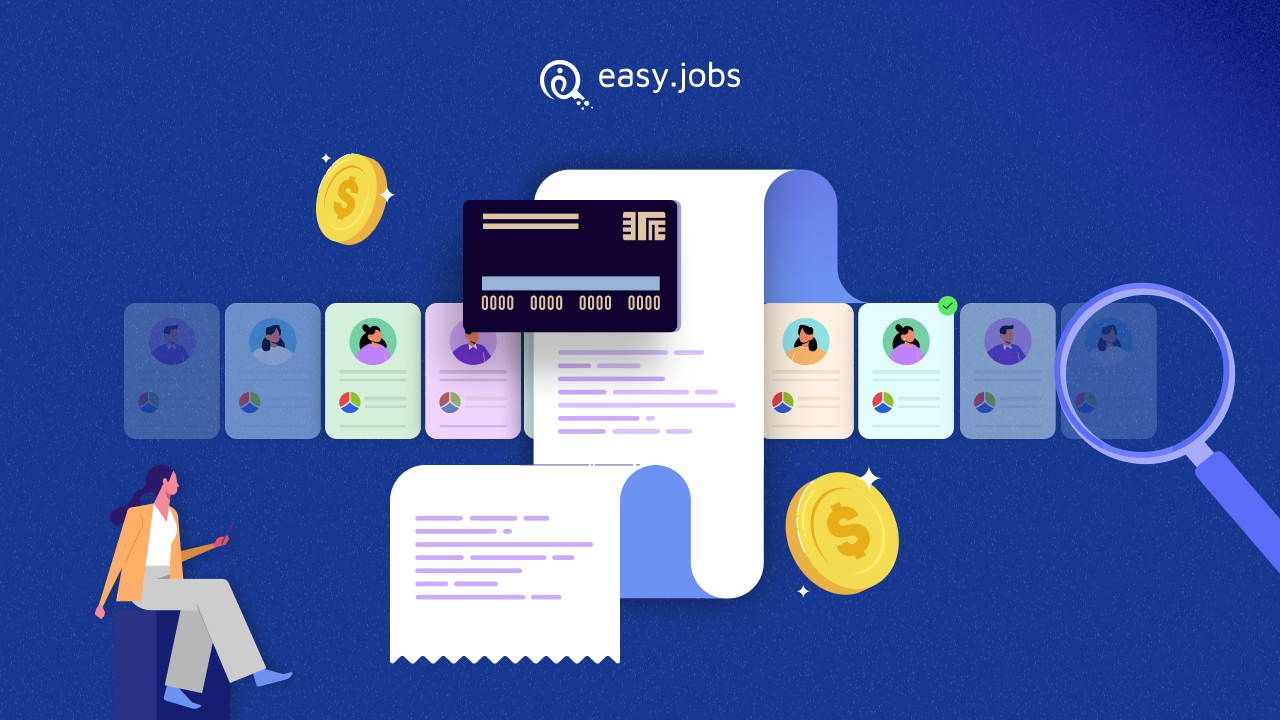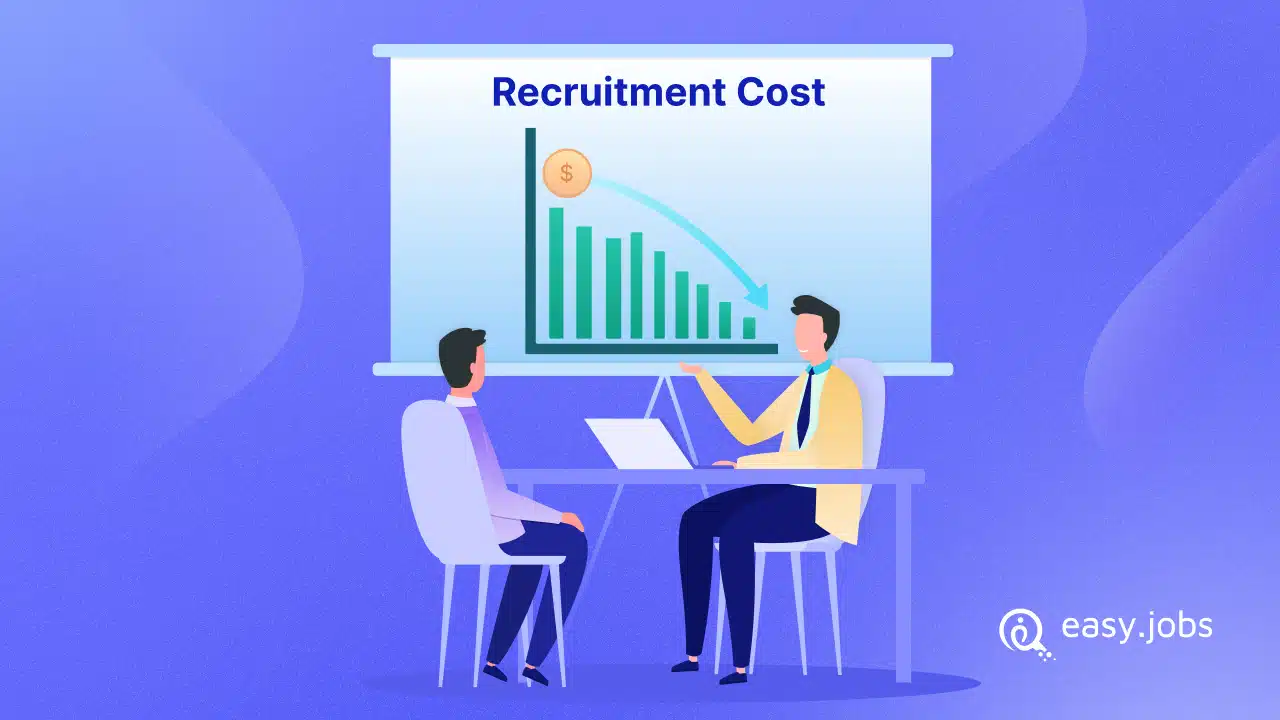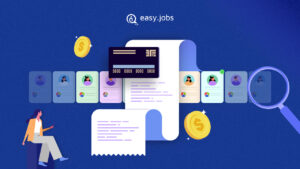Are you looking to better grip your recruiting budgets in 2025? Understanding your Cost Per Hire helps you forecast budgets, measure recruitment efficiency and attract the very best. Imagine trimming expenses while boosting quality. Let us discover this cost-efficiency metric to improve your hiring effort.

💲 What Is Cost Per Hire? Definition & Evolution
Cost Per Hire is the average amount a company spends to recruit, screen and bring a new employee on board. It combines all the internal expenses, such as recruiter salaries, hiring‐manager time, and recruiting software, with external fees like agency charges, job-board listings, and background checks. By dividing the total of these costs by the number of hires in a given period, you reveal a single, clear figure: your Cost Per Hire.
This recruiting metric first gained widespread acceptance when the Society for Human Resource Management (SHRM) and the American National Standards Institute (ANSI) published a standard formula in 2012. Since then, it has evolved from a simple budgeting tool into a strategic compass. Today’s HR leaders use it not only to measure recruitment spend but also to compare against the average cost per hire benchmarks in their industry, identify process bottlenecks, and build more efficient talent-acquisition strategies.
Over the years, organisations have refined which expenses to include; some now factor in relocation or signing bonuses, while others focus strictly on recruitment activities. As recruitment methods change and new technologies emerge, the definition of Cost Per Hire remains rooted in the principle of transparency: only by knowing exactly what you spend can you invest wisely in your people.
📈 Why Cost Per Hire Matters More Than Ever in 2025
In today’s market, talent shortages and rising salaries mean every recruiting pound counts. Your Cost Per Hire is more than a number, it is a mirror reflecting how effectively you use your budget to secure the right people.
Firstly, with inflation nudging up advertising, agency and technology fees, understanding your average recruiting cost per hire helps you forecast next year’s budget with confidence. You will know whether to allocate more for specialist roles or invest in more efficient sourcing channels.
Secondly, candidates now expect swift, personalised experiences. Suppose your hiring process drags out, requiring repeated interviews or lengthy background checks. In that case, your costs creep up, and you risk losing top talent. Tracking Cost Per Hire reveals these delays early, enabling you to streamline steps and reduce wasted effort.
Finally, board members demand hard data. By presenting a clear Cost-per-Hire trend over 2023–25, you demonstrate accountability and strategic foresight. You show that you can balance quality with cost—investing where it matters and trimming where it does not. So your organisation thrives even as the recruiting landscape shifts.
🧩 Breaking Down the Components: Internal vs. External Costs

To understand your Cost Per Hire, it helps to divide expenses into two clear categories: internal costs and external costs. Doing so lets you see exactly which activities drive your spend, and where you might optimise.
| Internal Costs | External Costs |
| Recruiter and HR team salaries and benefits | Recruitment agency fees |
| Time spent by hiring managers (interviewing, screening) | Job-board and advertising fees |
| Recruitment technology subscriptions (ATS, sourcing tools) | Background checks and pre-screening assessments |
| Compliance and administrative overhead | Candidate travel and relocation expenses |
| Onboarding platform or training costs | Signing bonuses or referral rewards |
🏢 Internal Costs
Every penny spent inside your organisation matters. Mapping these reveals exactly how in-house efforts shape your recruitment efficiency, including:
- Staff time and salaries: Include everyone directly involved in recruiting, from your in-house talent team to the hiring manager’s hours spent reviewing CVs.
- Technology and office overhead: Your applicant-tracking system, recruiting software licences and proportionate office costs (for example, a percentage of rent or utilities).
- Compliance and administration: Costs for legal checks, HR administration and any training your recruitment staff require.
💼 External Costs
External costs are the visible investments you make beyond your walls, ensuring you account for every hiring outlay. Also, they include:
- Agency and third-party fees: Payments to headhunters, search firms or outsourcing partners.
- Advertising and marketing: Job-board subscriptions, sponsored social-media posts and any promotional collateral.
- Assessment and checks: Fees for background screening, skills tests and medical checks.
- Candidate expenses: Travel, accommodation, relocation allowances or signing bonuses.
By tallying each line item and dividing by your total hires, you arrive at your average cost per hire. Breaking costs into these two pillars gives you the insight to decide: invest in better technology in-house, or negotiate agency rates. With this clarity, you can shape a more efficient, data-driven recruitment strategy.
🧮 How to Calculate Cost Per Hire: Step-by-Step Formula
Let us learn how to calculate cost per hire in your organization. Following these four steps, you will arrive at one clear figure reflecting your recruiting efficiency.
“Cost Per Hire Formula
Cost Per Hire = (Total Internal Costs + Total External Costs) / Total Number of Hires”
Step 1: Gather Your Cost Data
Work with Finance and HR to collect every expense related to recruitment over your chosen period (month, quarter or year). This includes salaries for recruiters and hiring managers, software licences, agency invoices, job-board bills, assessment fees and candidate travel or relocation allowances.
Step 2: Categorise Internal And External Costs
– Internal: In-house recruiter salaries, hiring-manager time (hours × hourly rate), ATS subscriptions, and administrative overhead.
– External: Agency retainers, job-board ads, background screenings, signing bonuses.
Record these in separate columns of a spreadsheet so you maintain full visibility.
Step 3: Determine Total Number of Hires
Decide which hires to include: full-time, part-time, temporary or fixed-term. Exclude internal transfers or contractors if you wish. Count only those who joined your payroll during the period under review.
Step 4: Apply the Formula
- Sum all internal costs and all external costs to get a Total Recruiting Spend.
- Divide this sum by the Total Number of Hires.
For example, if you spent $80,000 in total and made 20 hires, your Cost Per Hire is $4,000.
By mastering recruitment cost calculation, you gain a powerful metric for benchmarking performance, justifying budget requests, and uncovering opportunities to streamline your recruitment process.
📊 Recruitment ROI Benchmark
To know if your Cost Per Hire is healthy, compare it to current industry benchmarks—both for Cost Per Hire and for your broader Recruitment ROI. In 2025, the average cost per hire in the United States hovers around $4,800, modestly up from $4,425 in 2021. Globally, many organisations report an average recruiting cost per hire of about $3,500, though this varies by region and role.
According to the 2025 SHRM Talent Acquisition Benchmarking Report, here’s a quick industry snapshot for 2025:
- Technology & Engineering: $6,200 per hire
- Healthcare & Life Sciences: $5,000 per hire
- Retail & Hospitality: $2,700 per hire
- Finance & Insurance: $4,300 per hire
These figures offer a useful starting point. If your Cost Per Hire is well below these averages, ask whether you are under-investing in candidate quality, which could hurt your Recruitment ROI over time. If you are significantly above, investigate which costs agency fees, lengthy interview processes or generous relocation packages are pushing you up.
Remember that averages serve merely as guideposts. Your organisation’s size, location, and the complexity of roles you fill will shape your own average cost per hire. Use these benchmarks to calibrate your goals: aim to stay within 10% of your industry’s norm, then refine your process to drive real value, not just cost savings.
🔍 Key Factors Driving Your Hiring Spend Up or Down

Several elements can push your average hiring spend higher, or help bring it down. Understanding these drivers lets you steer your recruitment budget more wisely.
- Time-to-Fill and Process Length
Long vacancy cycles mean more recruiter and manager hours. The sooner you close a role, without rushing quality, the lower your overall spend. - Employer Brand Strength
A strong reputation attracts candidates organically, reducing advertising and agency fees. Investing in your company’s image can pay dividends in lower sourcing costs. - Use of Technology and Automation
Tools such as applicant-tracking systems, AI resume screeners or chatbots speed up screening and scheduling. While there is an initial licence cost, these systems often cut manual effort and agency reliance over time. - Candidate Experience
Smooth, respectful interactions from prompt feedback to clear timelines encourage applicants to stay engaged and accept offers more quickly. Fewer drop-outs mean fewer wasted interviews and re-advertising expenses. - Role Complexity and Specialisation
Hard-to-fill or highly specialised positions naturally cost more, whether due to niche advertising channels or higher agency premiums. Recognise when a premium spend is a necessary investment in scarce skills. - Referral and Internal Pipelines
Leveraging employee recommendations and in-house talent pools typically slashes outside agency costs. Encourage programmes that reward successful referrals for continual savings.
By tracking how each of these factors affects your hiring spend, you can focus on the areas that deliver the greatest efficiency, ensuring you invest where it truly counts.
🚀 6 Strategies to Optimise and Reduce Cost Per Hire

Reducing your Cost Per Hire need not mean cutting corners. Instead, focus on smarter investments and continuous refinement:
1. Leverage Employee Referrals
Incentivise your people to recommend candidates. Referrals often yield faster hires and lower agency fees.
2. Strengthen Employer Brand
Showcase your culture through social media, careers pages and events. A strong employer brand attracts quality applicants organically, reducing advertising spend.
3. Optimise Your Technology Stack
Invest in an ATS with integrated sourcing tools and automated interview scheduling. Good technology accelerates workflows and cuts administrative time.
4. Negotiate Agency And Job-Board Rates
Review contracts annually. Bulk posting or exclusive partnerships can secure lower per-hire fees.
5. Streamline Your Process
Map each recruitment stage. Eliminate unnecessary steps, perhaps combine initial screening with a skills assessment to shorten time-to-hire and reduce candidate drop-off.
6. Use Data to Drive Decisions
Track Cost Per Hire trends by department or role. Identify outliers and address root causes rather than applying blanket cuts.
Combining employee referrals, a strong employer brand, efficient technology, savvy vendor negotiations and streamlined processes, you can lower recruiting expenses and boost quality. Continuous measurement and data-driven tweaks ensure lasting improvements without sacrificing results.
💬 Frequently Asked Questions (FAQ) On CPH
What should be included in Cost Per Hire?
Include every expense directly tied to recruiting: internal costs such as recruiter and hiring manager salaries, AI recruitment software plans, office overhead, and compliance, plus external costs like agency fees, job-board advertising, background checks, assessments, candidate travel or relocation, and any signing or referral bonuses.
How often should I recalculate it?
Recalculate your metric at least quarterly to spot trends, validate process changes and adjust budgets. In high-volume organisations, monthly reviews offer finer insight; an annual calculation can suffice for slower hiring cycles, provided you benchmark against interim performance indicators to ensure no unexpected cost shifts occur.
Is a high CPH always bad?
Not necessarily. A higher figure may reflect strategic investments in specialist roles or enhanced candidate experience, yielding better long-term retention. Always evaluate alongside quality-of-hire, time-to-fill and ROI metrics to determine whether elevated spend translates into meaningful business value rather than inefficiency.
🎯 Empower Your Hiring Strategy to Make Every Hire Count
In 2025, mastering your Cost Per Hire is essential for balancing quality talent with sound budgets. You ensure each hire delivers maximum value by auditing every internal and external expense, benchmarking against industry averages, and applying data-driven optimisation.
Next, use a dedicated calculator template to make this process quick and accurate each quarter, keeping your data organised and accessible. Also, subscribe to our HR insights newsletter for expert analysis on evolving hiring trends, so you can refine your strategy and stay ahead in a competitive talent market.
If you have found this article useful, subscribe to our blog for regular updates and join our Facebook community to connect with like-minded professionals committed to creating thriving workplaces.







